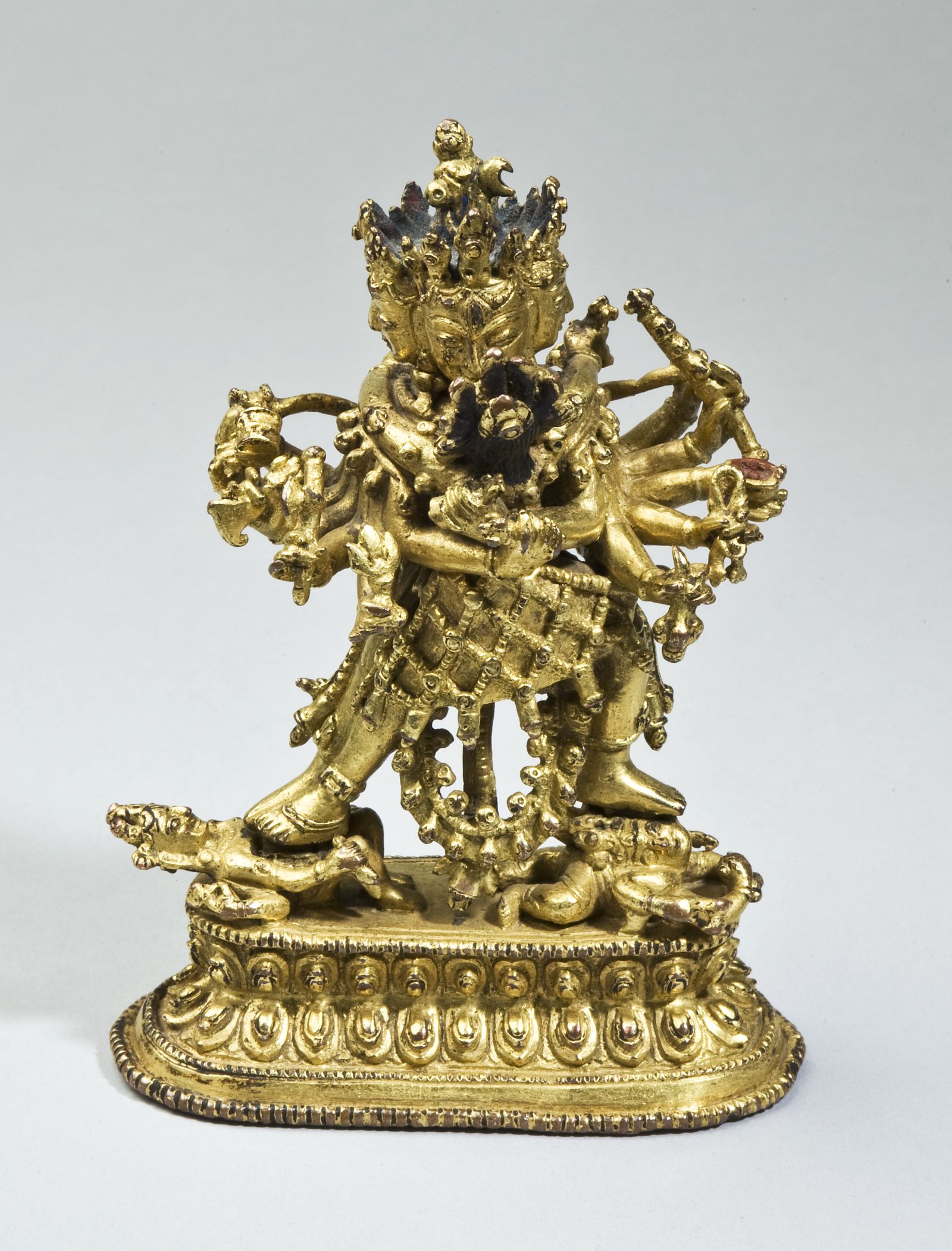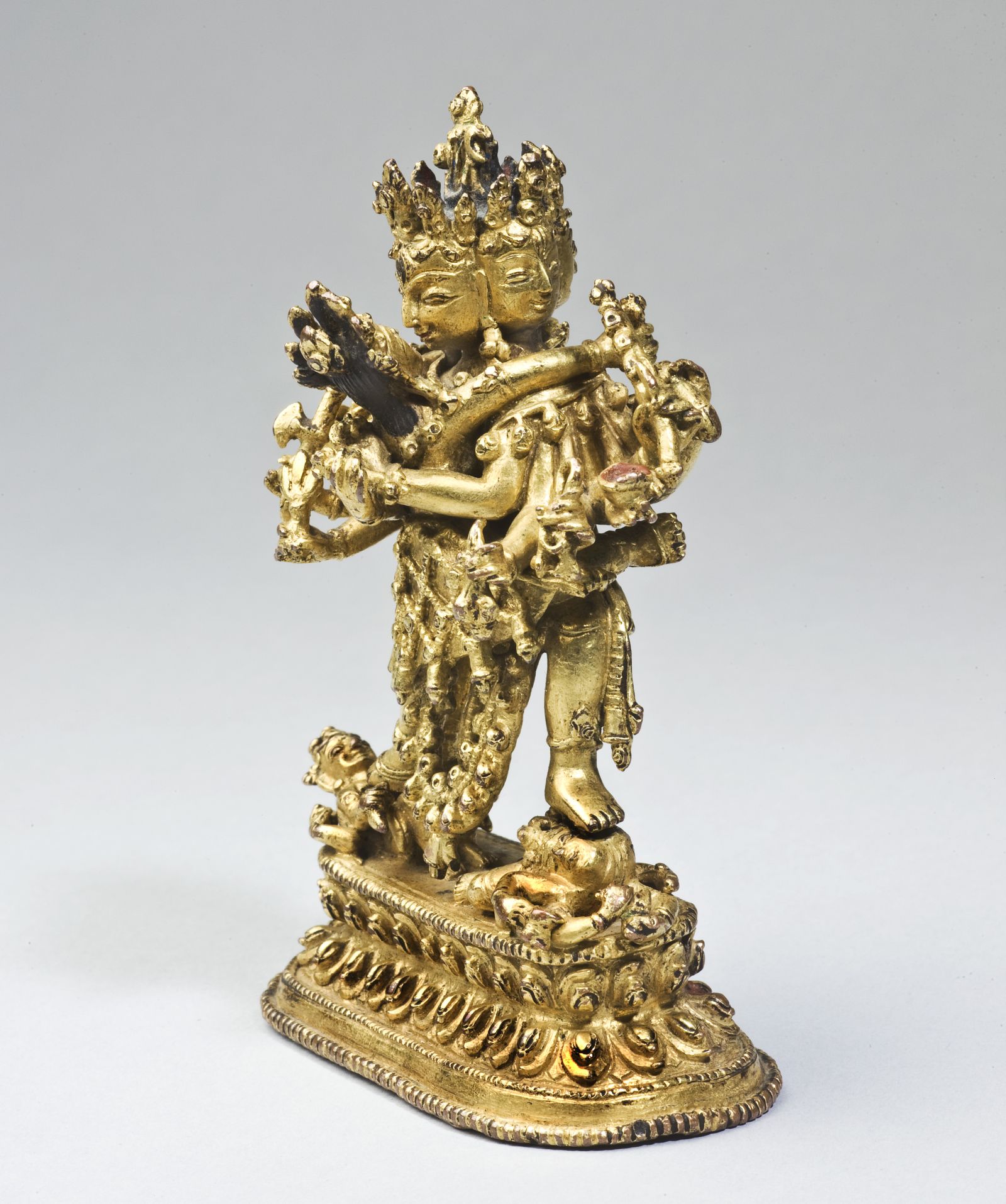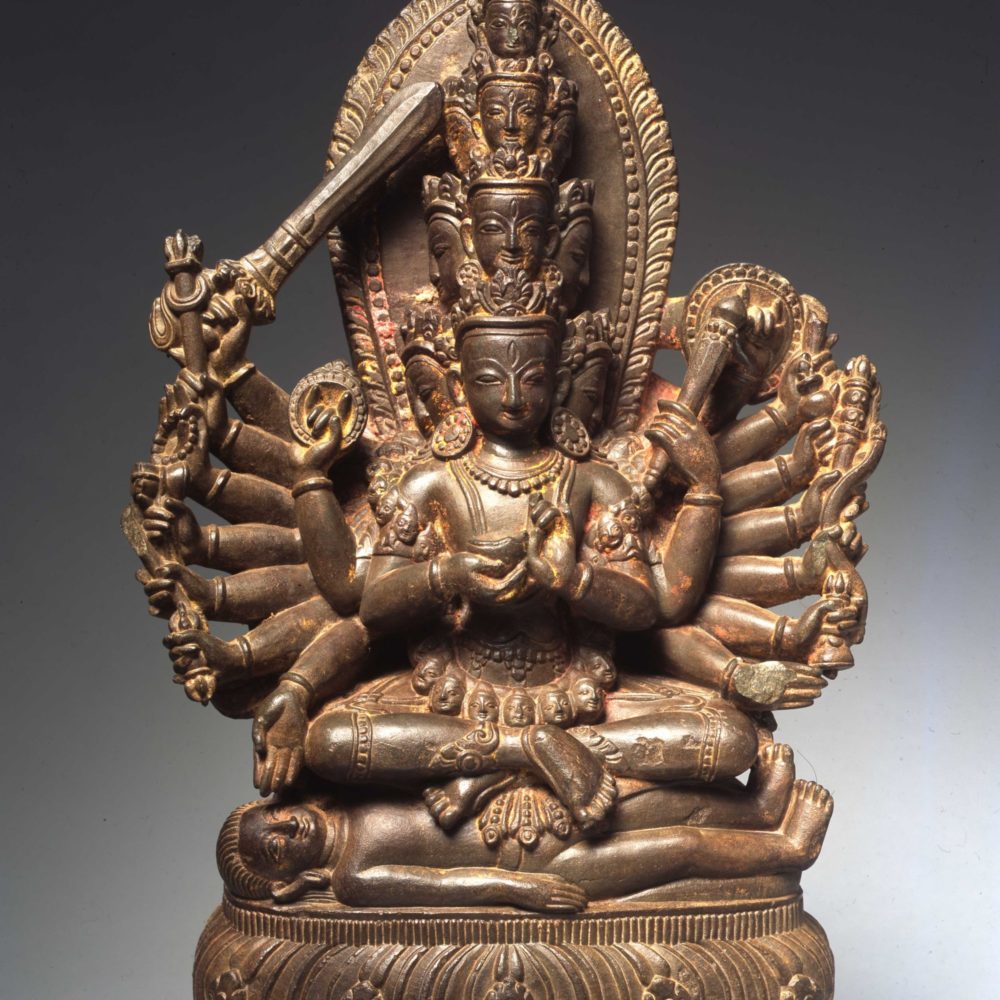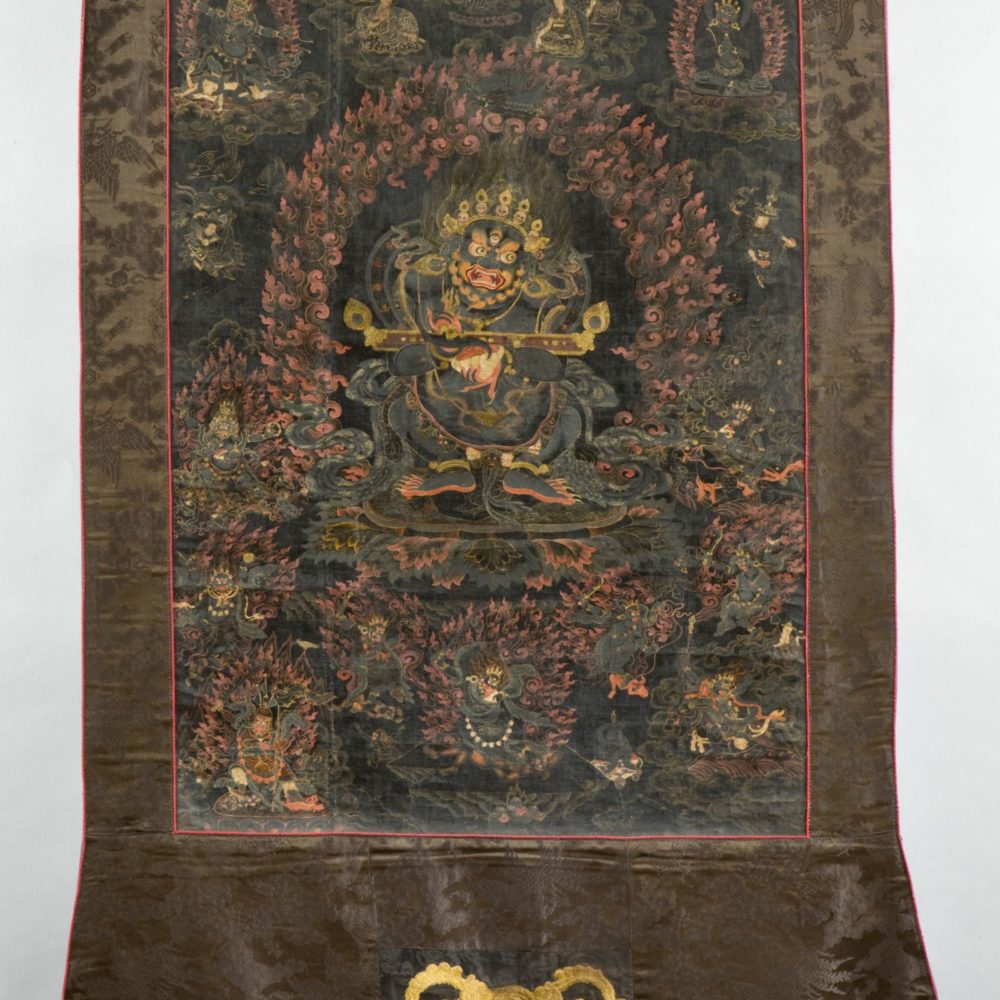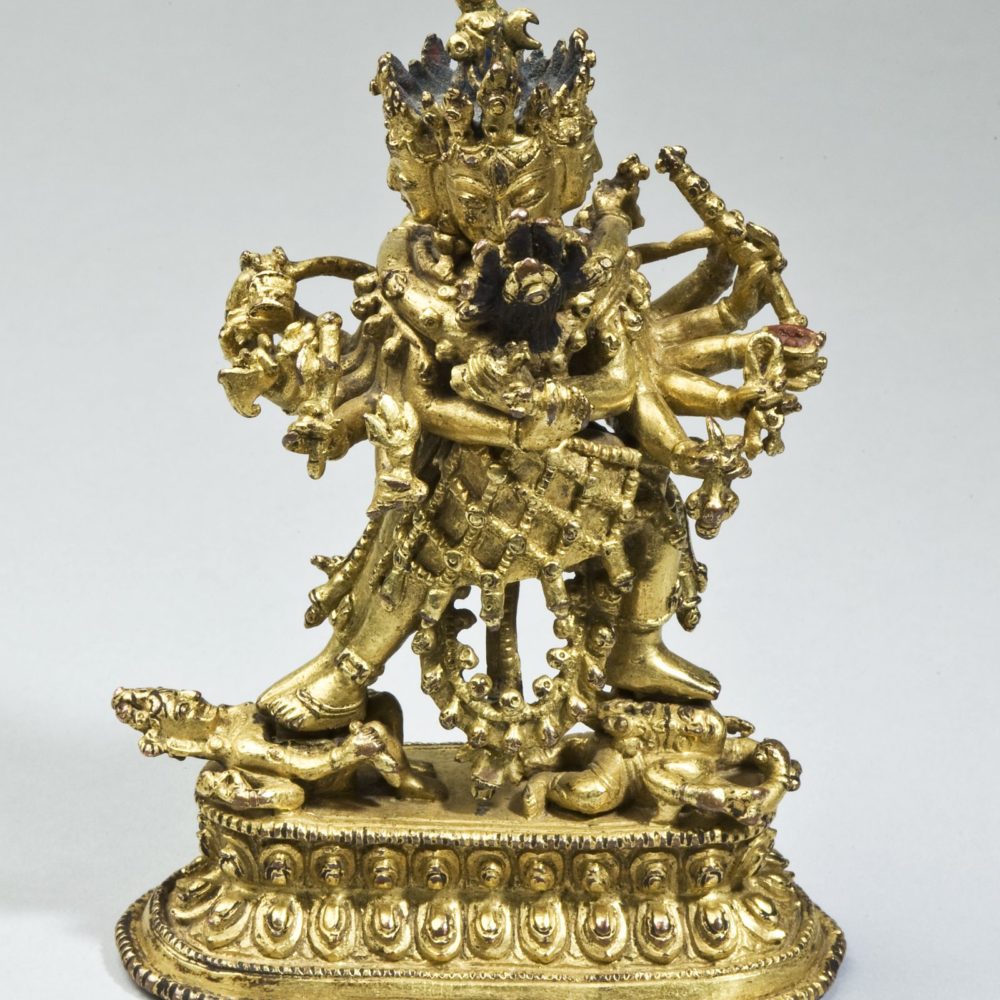A gilt bronze Yi-dam Chakrasamvara united with Vajravarahi
銅鎏金上樂金剛及金剛亥母雙修像
16th century, Nepal
16世紀, 尼泊爾
Height: 10.5cm, 4.13inches
10.5 釐米
Samvara appears in many different forms, yet his most common form is that of twelve-armed, four- headed Cakrasamvara, who is most popular in Nepal and Tibet, where he is regarded as the ‘Secret Lord of the Holy Mountain Kailasa’.
This Nepalese Chakrasamvara is depicted in a fighting stance trampling the two conquered Hindu gods Bhairava and Kalarat who are prostrating on a double lotus pedestal. Chakrasamvara tightly embraces his consort prajna Vajravarahi whose legs are wrapped around his hips. Both figures are crowned with five skulls and richly adorned with jewels, which are missing, holding the attributes that symbol their power. Between the Yi-Dam legs a long garland of severed human heads hangs down, representing Chakrasavara’s conquest over egotistic mental processes.
Chakrasamvara holds attributes, in his two principle hands, a five-pronged vajra and a prayer bell, then from the next left a severed four-faced Brahma head, a lasso, a skull bowl, and a khatvanga staff; from the next right a trident, an ax, a vajra chopper, and a damaru drum. With his back two hands he lifts up the freshly flayed skin of the elephant of igonorance. The Yogini Vajravarahi looks devotionally at Chakrasamvara. She wears a detailed girdle with jewels (which are missing), holding a vajra chopper in her right hand.
Similar Examples
‘Indo Tibetan Bronzes’, by Ulrich Von Schroeder, Visual Dharma Publications Ltd Hong Kong 1981, figure 100D, page 377.
‘British Musuem Online Collection’, Object No. 1921.0219.1, http://www.britishmuseum.org


